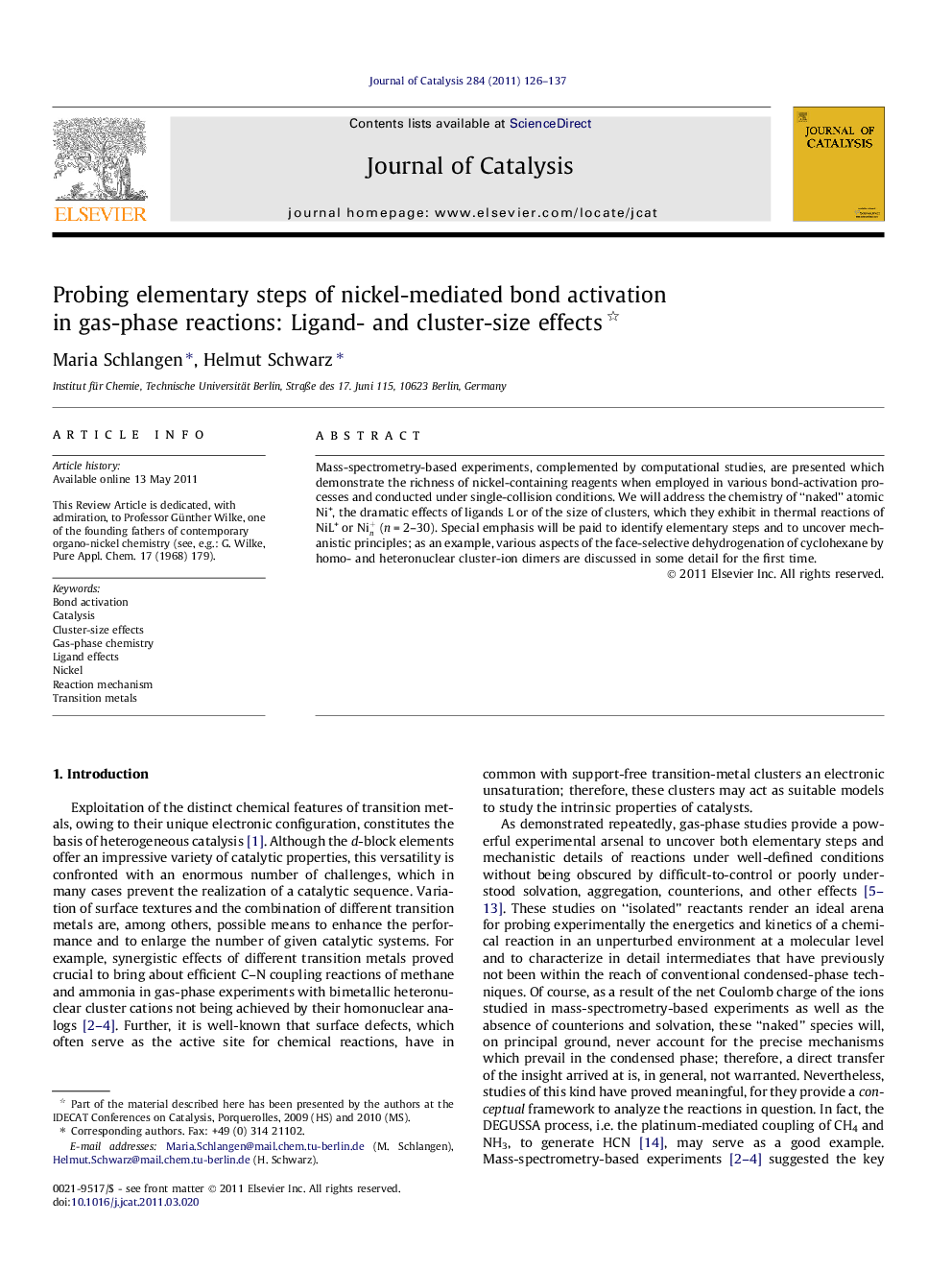| Article ID | Journal | Published Year | Pages | File Type |
|---|---|---|---|---|
| 61556 | Journal of Catalysis | 2011 | 12 Pages |
Mass-spectrometry-based experiments, complemented by computational studies, are presented which demonstrate the richness of nickel-containing reagents when employed in various bond-activation processes and conducted under single-collision conditions. We will address the chemistry of “naked” atomic Ni+, the dramatic effects of ligands L or of the size of clusters, which they exhibit in thermal reactions of NiL+ or Nin+ (n = 2–30). Special emphasis will be paid to identify elementary steps and to uncover mechanistic principles; as an example, various aspects of the face-selective dehydrogenation of cyclohexane by homo- and heteronuclear cluster-ion dimers are discussed in some detail for the first time.
Graphical abstractWith a little help from my friends: While “naked” Ni+ is reluctant to bring about bond activation of small inert molecules, ligated species as well as nickel-containing dimeric clusters NiM+ can activate methane and ethane, respectively. A summary of nickel chemistry in the gas phase is presented which is not only characterized by a remarkable reactivity that can be tuned by ligands over a broad scope, but also by a large diversity with respect to the reaction mechanisms observed for the individual gaseous nickel species.Figure optionsDownload full-size imageDownload high-quality image (93 K)Download as PowerPoint slideHighlights► Generation and reactivity of nickel species in the gas phase. ► Reactivity of gaseous nickel complexes tuned by ligands over a broad scope. ► A plethora of different reaction mechanisms observed for gaseous nickel species.
